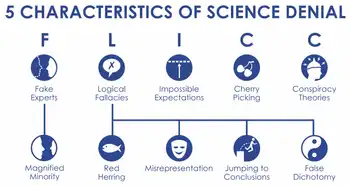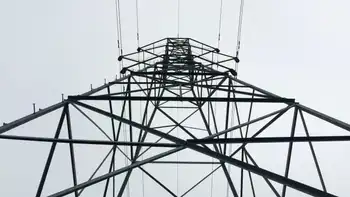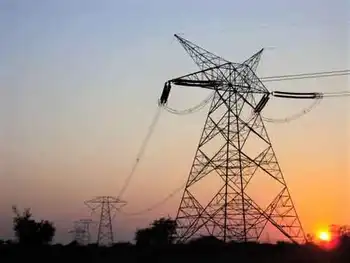Gulf coast wind farms are blossoming
By Texas Tribune
Substation Relay Protection Training
Our customized live online or in‑person group training can be delivered to your staff at your location.

- Live Online
- 12 hours Instructor-led
- Group Training Available
“It’s always nice to be cranking,” said Daniel Pitts, who manages the wind plant for its owner, Iberdrola Renewables, as the blades spun in the breeze.
The wind farm, which began operating in 2009 and doubled in size last year, reflects the new geography of wind power in Texas, the countryÂ’s leading wind state. The vast majority of Texas turbines have gone up in the west, harnessing fierce winds that sweep southward from the plains. But the West Texas projects have been hindered by a lack of transmission lines to carry the power.
Meanwhile, several big wind farms have begun operating in the general vicinity of Corpus Christi in the past few years, and it is likely that more coastal projects are on the way.
“The short term for coastal wind is great,” said Patrick Woodson, the chief development officer for E.ON Climate & Renewables North America, which last year expanded a wind farm that it owns just north of Corpus Christi. “There will be a number of prime sites that get built out in the next two to four years.”
South Texas now accounts for roughly one-ninth of the stateÂ’s total wind capacity. A substantial amount of the recent growth on the Texas electric grid, which gets nearly 8 percent of its power from wind, came from the coast, said Barry Smitherman, chairman of the Public Utility Commission. Transmission infrastructure is plentiful along the coast, unlike that in West Texas. And coastal winds are strongest in the afternoons and in the summer, wind experts say. That correlates well to the electric gridÂ’s needs. West Texas winds, although more powerful, tend to blow strongest in the evening and overnight, and in the spring.
But the arrival of turbines along the Gulf shores has spawned a range of concerns, like their impact on birds and coastal habitat and the turbinesÂ’ effect on military radar.
“I think it’s a tragedy for the state and the coast,” said Jack Hunt, the former chief executive of the storied 825,000-acre King Ranch, which is next door to the Kenedy Ranch, where Iberdrola and another developer, Pattern Energy, have recently erected wind farms.
A few years ago, the King Ranch teamed with a local chapter of the Audubon Society and other environmental groups and sued — unsuccessfully — to try to stop the Kenedy Ranch wind projects. Mr. Hunt, who remains a consultant to the King Ranch, said the ranch was concerned about the potentially damaging effect on coastal wetlands and wildlife, and was irked that wind farms in Texas could be built essentially without permits.
This part of the Gulf Coast lies along a major migratory bird path, and wind developers say they take extra precautions to guard against bird deaths. Iberdrola and Pattern have installed a new type of radar that is supposed to detect large flocks of approaching birds so the turbines can be turned off at critical times.
Iberdrola has completed the first year of a three-year survey of bird deaths on its coastal wind farm, and it estimates that there have been a handful of bird and bat deaths per turbine. That is in line with turbines elsewhere in the country, said Stu Webster, IberdrolaÂ’s director of wind permitting, who added that no member of an endangered species had been found dead though some birds have proven impossible to identify.
David Newstead, president of the Coastal Bend Audubon Society, based in Corpus Christi, said that little substantial data on bird deaths had been made public by the wind farms, and that the turbines’ effect “remains a major cause of concern around here.”
The Naval Air Station Kingsville, a training ground for jet pilots, worries about the turbines interfering with its radar the spinning machines look like airplanes on the screens of military radar operators. Capt. Mark McLaughlin, the station’s commanding officer, said the Navy had had to “tweak” its radar to block out the Kenedy Ranch turbines, even though they are more than 20 miles from its airfields.
Filings with the Federal Aviation Administration show that there have been proposals for additional wind developments 5 miles to 25 miles from the base, Captain McLaughlin said.
“We are very concerned about how close these wind turbines are,” he said, adding that nationally the Navy would like wind farm construction to stay outside a 30-mile radius of its facilities.
Wind developers have encountered some unusual issues along the coast. Mr. Pitts said that no hurricanes had struck since Iberdrola’s wind farm began operating but that corrosion posed problems for the turbines because of the “salt fog” that envelops the area. Mr. Woodson said workers at E.ON’s coastal wind farm, which is built above cotton fields, had spotted alligators in drainage ditches.
E.ON is looking at other coastal sites, Mr. Woodson said. Iberdrola and Pattern both have the option of putting additional turbines on the Kenedy Ranch, which is closely tied to the Roman Catholic Church and gives its wind royalties to charities.
But coastal wind farms cannot proliferate indefinitely. Mr. Woodson said that good sites are hard to come by on the coast, especially given the environmental and airspace concerns. Moreover, once a $5 billion statewide transmission line expansion to aid wind power is completed, wind farms will most likely resume their rapid growth in West Texas, where land and good winds are plentiful. In particular, the Panhandle, which has the strongest winds of any Texas region but is currently beyond most transmission lines, “will be really hard to compete with,” Mr. Woodson said.
Texas is also hoping to develop offshore wind power in the Gulf of Mexico, and the stateÂ’s General Land Office has leased out four parcels for offshore wind development since 2005. No turbines have gone up. But Herman J. Schellstede, a Louisiana-based official with Coastal Point Energy, a development company that has taken the leases, said he aimed to put up a test turbine on an offshore platform nine miles south of Galveston and have it operational by October. The turbine would replace a meteorological tower that has measured the winds there for over three years.
“Two hurricanes have gone directly over our tower without any damage, thank God,” Mr. Schellstede said.











